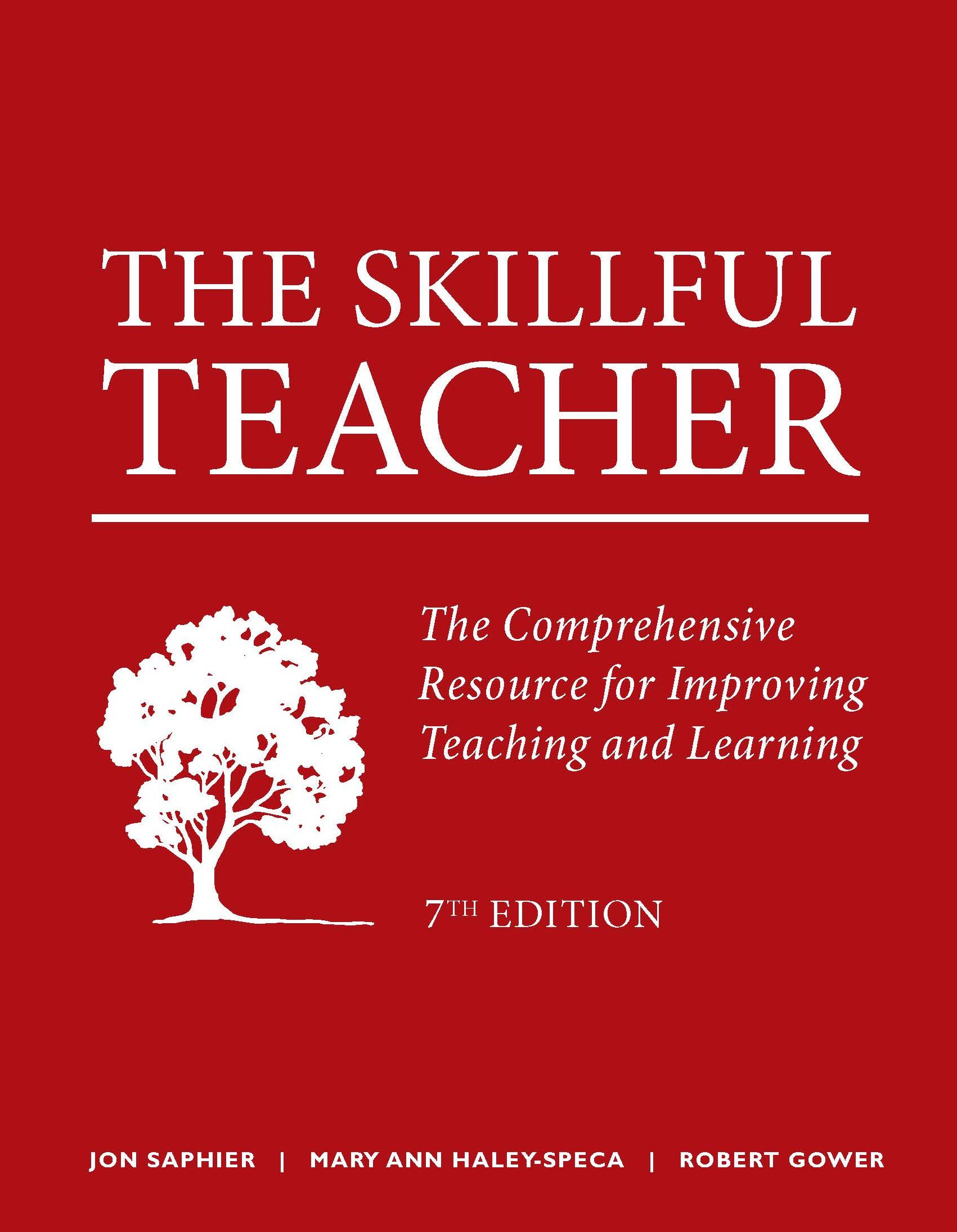AI: How to Use it Rather than Run From It
AI is here to stay, and thoughtfully used, it will be a boon to teaching and learning. Social media is abuzz with ideas for using AI in the classroom and tapping into its potential for assisting with lesson planning, suggesting topically-related activities, or producing writing prompts.
AI is here to stay, and thoughtfully used, it will be a boon to teaching and learning. |
Although we may be embarking on a new era of AI-generated classroom assistance, these tools can neither reproduce nor replace the qualities of a highly skilled teacher. The heart of teaching lies in the creative, interactive, and responsive decisions and interactions that occur daily between teachers and their students. Leading robust discussions in large and small groups where students talk more than teachers; judging when to slow down, pause to summarize or to re-teach a difficult concept; or carefully listening “between the lines” as a student formulates a new idea are examples of those dynamic moments when the teaching and learning cycle comes to life. AI can’t do that. Neither can AI give us motivation or matching moves to build those critical personal relationships with our students, do home visits, or immerse us in the cultural milieu of our students to learn the subtleties of the cultures we want to make visible in school for our students.

The heart of teaching lies in the creative, interactive, and responsive decisions and interactions that occur daily between teachers and their students. |
It would be instructive and, we think, reassuring for us to review the summaries of each chapter in The Skillful Teacher (2018) to identify items like those above. We think the Expectations chapter alone has quite a rich harvest in it as well as all the chapters on Classroom Management and Classroom Climate building.
So where can AI be of most help? A recent study by Bryant et al (2020), found that teachers work about 50 hours a week, spending less than half of the time in direct interaction with students (Bryant et. al. 2020). “Once we understood how teachers spend their time, we evaluated automation potential across each activity, based on an evaluation of existing technology and expert interviews.” They conclude: “Technology can help teachers reallocate 20 to 30 percent of their time toward activities that support student learning [directly].” (Bryant op. cit.) They estimate that of the average 50 teacher working hours a week, 13 could be saved for student interaction, for collaboration with each other, and for increased family time with effective use of technology.
Speaking of collaboration, in the Rigor chapter of Disrupting the Teacher Opportunity Gap (Saphier 2024) we shared a script of a team digging into the insights that could be gleaned from a deep analysis of Steve Jobs’ commencement speech at Stanford University. Digging into material in this way is one great use of “found time” AI might give us. So is time to work in teacher teams to actually do the tasks in the curriculum materials, in order to anticipate student confusions and difficulties.

AI can also dramatically save time with some aspects of student assessment and feedback [e.g., Cognii.com]. Although AI will never replace the dynamic give-and-take of teacher-student interactions and the individual conferencing that empower formative assessments, it can help with the more routine aspects of assessment like creating quizzes and generating tools to monitor and track student progress. For example, Archibald et al (2023) showed how AI driven discussion platforms could save teacher time in moderating and grading interactive student discussions online, “freeing up time for human-driven interventions such as providing feedback, which this study indicates being impactful for students’ writing skills.” (Archibald op. cit.).
Although AI will never replace the dynamic give-and-take of teacher-student interactions and the individual conferencing that empower formative assessments, it can help with the more routine aspects of assessment like creating quizzes and generating tools to monitor and track student progress. |
If AI saves time that used to be spent planning, making quizzes, and responding to student work, what then can we spend time doing that we couldn’t before? Above all, we can spend increased time in direct interaction with students – personal relationship building, individual coaching, and re-teaching to small groups. Woven throughout our interactions are the language choices that get students to believe in themselves (See Expectations chapter, The Skillful Teacher, Saphier et al, 2018) AI will never be able to do that.

For all this to take shape, we will need focused professional development for how to use the AI tools well and to blend them into the wider landscape of our classroom instruction. We will also gain time for renewed professional development on those high-leverage pedagogy skills that boost our expertise, like giving feedback according to the criteria for success and doing error analysis with colleagues to prepare re-teaching for small groups.
Most of all, we need to remember that teaching well requires much more than quizzing, tracking, monitoring, and categorizing. It’s also much, much more than simply delivering content. Teaching well requires us to see and value our students as unique individuals and to create the kind of classroom community where they can grow and learn.
Most of all, we need to remember that teaching well requires much more than quizzing, tracking, monitoring, and categorizing. |
And what about the students? How will their use of AI impact schooling as we know it? When the internet began to gain popularity in the late 20th century, it came with many of the same fears we are seeing with AI. Fears of cheating and plagiarism, lack of credibility and quality, issues of access and equity, and more. While these fears were not without merit, they did not stop us from figuring out how to embrace the opportunities this new technology offered: unprecedented access to information, increased communication, and a host of collaboration tools, to name a few. And we cannot let similar fears stop us now because, simply put, we cannot hide from AI and the fact that it will be used worldwide.

Our starting point should be the assumption that 100% of our students will use AI. We would be naive to think otherwise. |
In a recent New York Times article (8/24/23), Kevin Roose observed that our starting point should be the assumption that 100% of our students will use AI. We would be naive to think otherwise. With this in mind, we teachers should first dig in to fully understand the tool and its many uses, and then to be thoughtful about incorporating it into our classrooms. We must provide students with clear guidelines while also building in opportunities for us to reflect on what is and is not working, and then to adjust our practices accordingly.
Siegle (2023) suggests multiple ways AI can be used to assist students - from helping them develop ideas and outlines to asking them to evaluate the accuracy and validity of the information it generates. Teachers can incorporate AI into their lessons, or shift assignments to be completed in class rather than at home where students might be more likely to use AI. But this comes with the caution that, “teachers should establish clear guidelines and policies around AI use to ensure students use it responsibly, safely, and effectively for learning and research. Which includes how to navigate the various AI platforms such as ChatGPT and Bing AI, how to ask clear and concise questions, how to interpret the responses provided by chatbots, and how to cite the sources provided by AI tools.” (Siegle 2023)

Let us use AI as a tool to enhance our teaching and learning potential. This is yet another opportunity to expand our repertoires and use our insights and expertise to appropriately match this tool to our content, context, and above all, our students. Now is the time to jump on board and learn all there is to know about AI because it is here to stay, whether we like it or not.
Let us use AI as a tool to enhance our teaching and learning potential. |
References
- Archibald, A., Hudson, C., Heap, T., Thompson, R., Lin, L., DeMeritt, J., Lucke, H. (2023). A validation of AI-enabled discussion platform metrics and relationships to student efforts. TechTrends, 67, 285-293.
- Bryant, J., Heitz, C., Sanghvi, S., & Wagle, D. (2020). How artificial intelligence will impact K-12 teachers. New York, NY: McKinsey and Company.
- Roose, K. (2023, August 24). How schools can survive (and maybe even thrive) with A.I. this fall. The New York Times. https://www.nytimes.com/2023/08/24/technology/how-schools-can-survive-and-maybe-even-thrive-with-ai-this-fall.html?smid=nytcore-ios-share&referringSource=articleShare
- Saphier, J., Haley, M.A. & Gower, R. (2018) The Skillful Teacher. Acton, MA: Research for Better Teaching.
- Saphier, J. (2024). Disrupting the Teacher Opportunity Gap: Aligning 12 processes for high expertise teaching. Thousand Oaks, CA: Corwin
- Siegle, D. (2023). A role for ChatGPT and AI in gifted education. Gifted Child Today, 46(3), 211-219.
